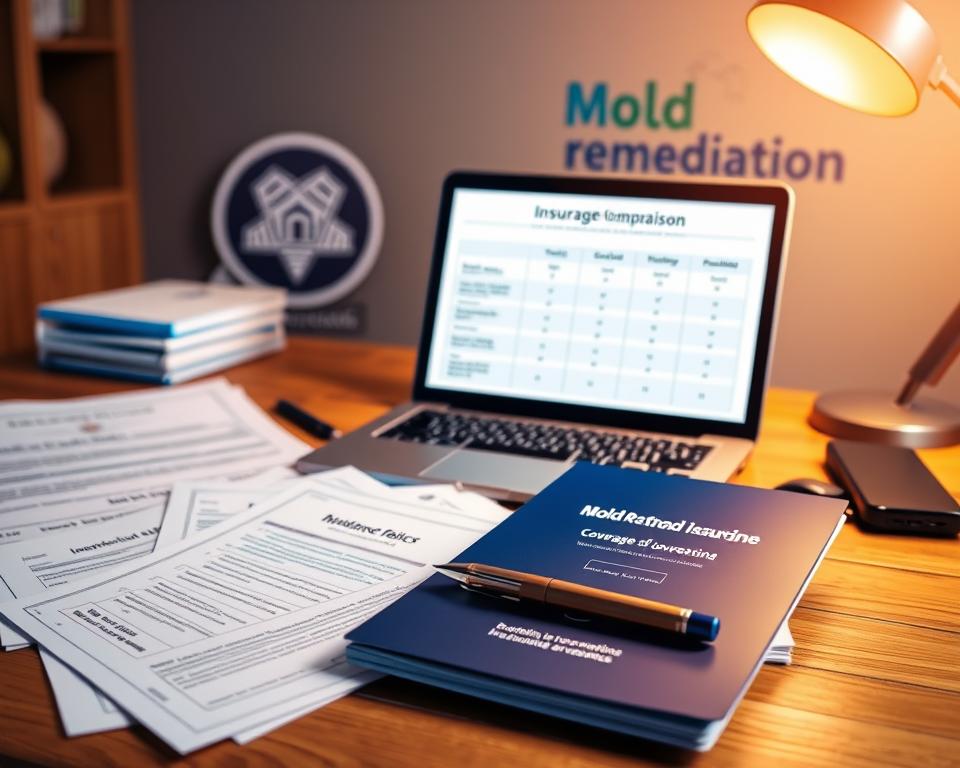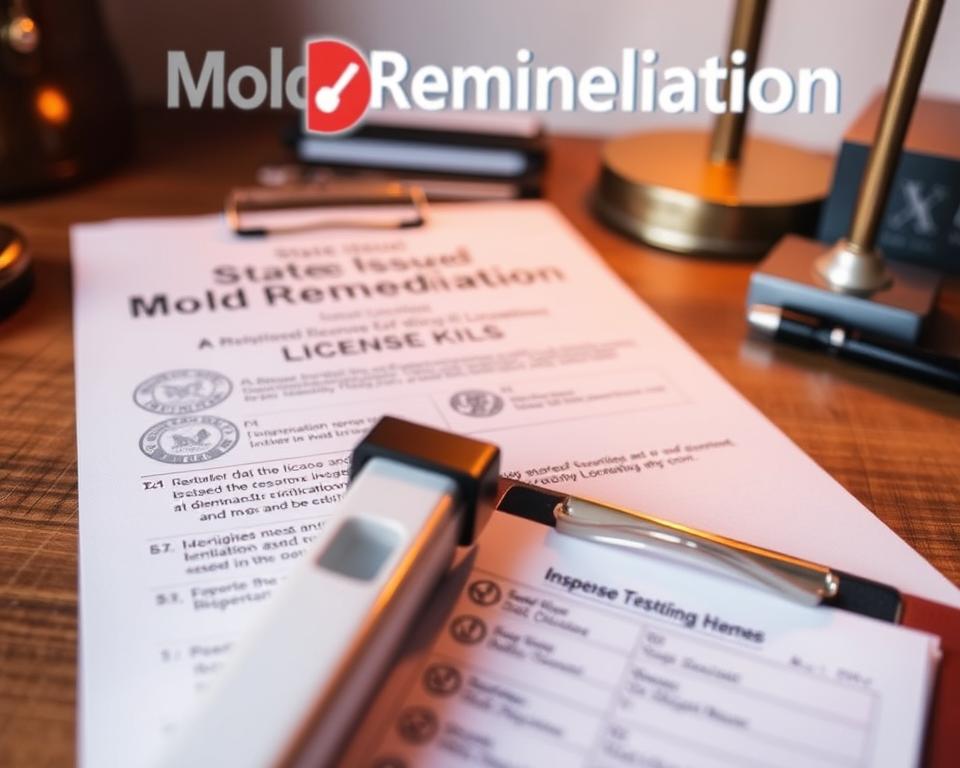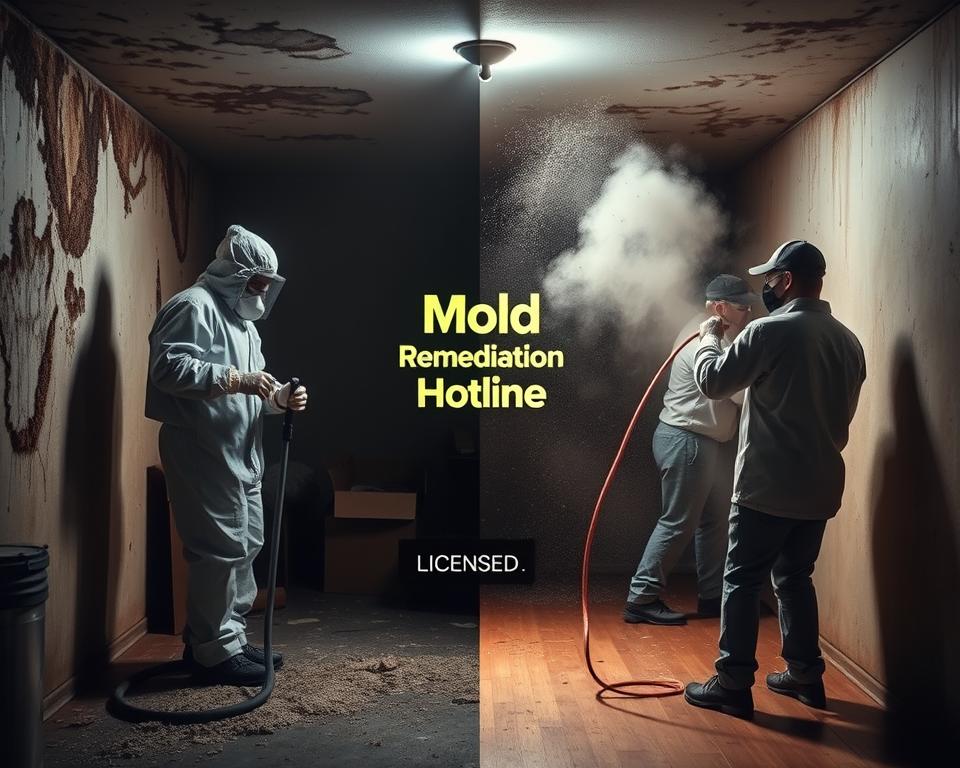Hidden dangers lurk behind bargain prices for fixing fungal growth. Many homeowners discover too late that choosing the cheapest provider can shift full financial responsibility onto them if issues resurface. This critical decision impacts both wallets and well-being.
Certified professionals follow strict protocols to eliminate spores safely. Non-certified providers often skip vital steps like containment barriers or air filtration. These shortcuts leave behind invisible threats that worsen over time.
State regulations require specific training and insurance for proper fungal removal. Without these safeguards, property owners risk incomplete cleanup and potential lawsuits. The initial savings from discounted services often vanish when facing repeat contamination or health concerns.
Key Takeaways
- Non-certified providers transfer legal liability to property owners
- Proper spore removal requires specialized equipment and training
- State-regulated protocols prevent recurring contamination
- Insurance coverage protects against unexpected cleanup costs
- Documented processes ensure long-term property safety
Understanding Mold Remediation: The Scope and Methods
Proper fungal removal requires more than surface cleaning. It demands scientific precision to protect homes and health. Certified professionals use specialized methods to address hidden threats, while untrained approaches often worsen contamination.
Defining Professional Standards
State-approved programs teach safe spore elimination through hands-on education. In Texas, workers must pass exams on water damage patterns and respiratory safety. This ensures they understand how moisture fuels growth and which materials need replacement.
Health Risks and Protective Measures
Airborne particles from disturbed colonies trigger allergies and respiratory issues. Trained teams create sealed zones with negative air pressure, preventing spore spread. They use HEPA vacuums and antimicrobial treatments to sanitize affected areas completely.
Advanced Elimination Strategies
Effective protocols start with moisture mapping and material testing. Professionals then remove porous items like drywall using containment chambers. Non-porous surfaces undergo scrubbing with EPA-approved solutions. Post-cleanup air tests confirm no lingering particles.
Licensed vs. Unlicensed Mold Remediation: Comparing Risks and Benefits
Property owners face critical decisions when addressing fungal growth. Understanding both immediate and long-term impacts helps make informed choices. This analysis explores key differences in service quality and financial protections.

Worker Safety and Occupant Protection
Untrained crews often skip vital safeguards during spore removal. Improper containment spreads particles through ventilation systems. This exposes residents to respiratory irritants and allergens.
Certified teams use sealed work zones with specialized air filters. They follow strict protocols for protective gear and waste disposal. These measures prevent cross-contamination and protect vulnerable household members.
Financial Safeguards and Property Integrity
Homeowners risk significant liability with non-certified providers. Injury claims from uninsured workers could lead to costly lawsuits. Insurance companies often deny coverage for damages caused by improper remediation.
Properly credentialed firms carry multiple policy types:
| Protection Type | Certified Company | Unlicensed Provider |
|---|---|---|
| Worker Injury Coverage | Full insurance | Homeowner liability |
| Property Damage | $1M+ policies | No guarantees |
| Code Compliance | Guaranteed | Unverified |
Structural repairs from untrained workers often fail inspection. This creates additional costs for rework and permits. Licensed contractors combine fungal removal with building code expertise for lasting results.
Legal and Regulatory Perspectives in Mold Remediation
State laws shape how professionals address fungal contamination, with strict rules protecting consumers. Regulatory frameworks establish accountability through mandatory credentials and oversight mechanisms.

State Licensing Requirements and Enforcement Standards
Florida mandates $1 million insurance policies for assessors and contractors. Texas requires in-state offices and specialized training through TDLR. Both states impose criminal penalties for unlicensed work, including fines and cease-and-desist orders.
Regulatory bodies conduct random inspections and investigate complaints. In 2023, Texas issued 47 violations for improper documentation of work performed. Florida’s DBPR maintains public databases of licensed professionals for verification.
Judicial Insights and Contractual Implications
Courts increasingly void agreements with unlicensed contractors. A 2022 Florida appellate decision ruled:
“Homeowners may withhold payment when services violate licensing statutes, as public policy favors regulated practice.”
This precedent strengthens consumer defenses against non-compliant providers. Judges balance strict law enforcement with fairness considerations in individual cases.
Industry Guidelines and Certification Issues
Certified professionals complete annual training on:
- Water intrusion patterns
- Respiratory safety protocols
- EPA-approved antimicrobial treatments
Texas requires 16 hours of continuing education every two years. Florida assessors must pass advanced assessment exams covering building science and liability management. These standards ensure contractors maintain current expertise in evolving methodologies.
Conclusion
Choosing how to address fungal growth in homes carries lasting consequences. Proper cleanup demands expertise that untrained individuals simply can’t provide. While lower-cost options might seem appealing, they often lead to repeat issues and hidden expenses.
Certified contractors bring essential safeguards to every project. Their work includes insurance-backed guarantees and strict adherence to safety codes. This protects both property value and occupant health long after the initial service.
Regulatory standards exist for good reason. Companies following these protocols use specialized equipment to prevent spore spread. They document every step, creating accountability if problems resurface.
The true cost of improper methods becomes clear over time. Health risks from incomplete removal often surface months later. Structural repairs from inadequate techniques frequently require complete rework, doubling expenses.
Smart property owners prioritize verified professionals. This choice ensures air quality protection, legal compliance, and financial security. Quality work performed by experts remains the only reliable path to lasting results.
